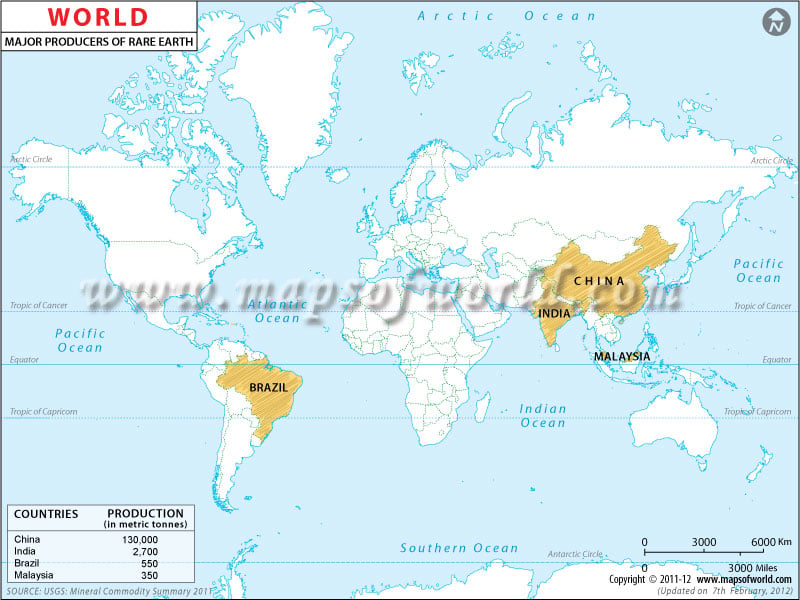The International Union of Pure and Applied Chemistry (IUPAC), defines the rare earth elements as a set of seventeen chemical elements. The seventeen elements are: Scandium, Yttrium, Lanthanum, Cerium, Praseodymium, Neodymium, Promethium, Samarium, Europium, Gadolinium, Terbium, Dysprosium, Holmium, Erbium, Thulium, Ytterbium, and Lutetium.
These elements are found together and exhibit similar chemical properties.
Contrary to their name, rare earth elements, except the radioactive promethium, are found in plenty in the Earth’s crust.
Gadolinite, a compound of cerium, yttrium, iron, silicon and other elements, is the first rare earth mineral. It is a black mineral and was known as “ytterbite” until 1800, when its name was officially changed to gadolinite. It was discovered by Lieutenant Carl Axel Arrhenius in 1787, at a quarry in the village of Ytterby, Sweden.
The World Map of rare earth minerals shows the list of countries that produce the maximum amount of rare earth minerals. As shown in the map, China has the largest reserves of rare earth minerals in the world; in 2010, the country produced over 130,000 metric tonnes of such minerals.
The second largest rare earth minerals producer is India with an annual production of 2,700 metric tonnes. Brazil ranks third followed by Malaysia.
Rare earth elements are produced by supernova nucleosynthesis because they are heavier than iron. These elements change with the passage of time and can hence be used for dating fossils and geochronology.
Major Producers of Rare Earth in world-2010
| Country | Production (Metric Tonnes) |
| China | 130,000 |
| India | 2,700 |
| Brazil | 550 |
| Malaysia | 350 |
